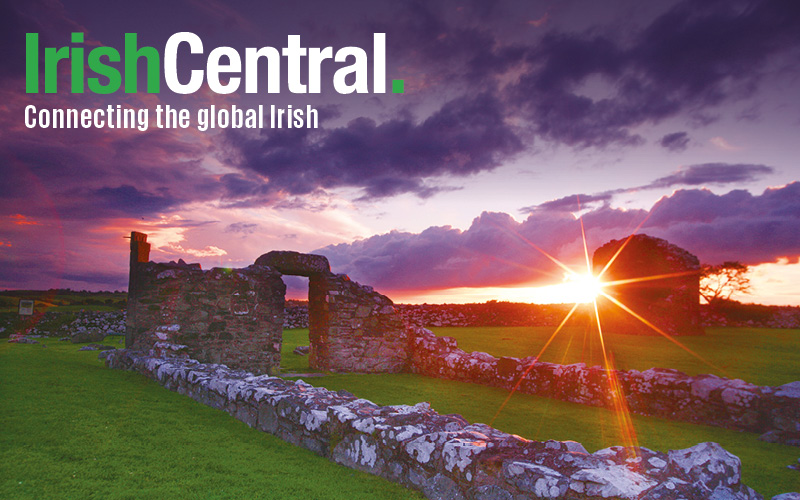Posted by PatriciaHarty at 3/25/2009 1:22 PM EDT
When I was young, a visit by two Frenchmen caused great excitement in our house.
They were distant cousins – descendants of Oliver Harty who was born in Knockainey, Knocklong, County Limerick in 1746 and left for France as a lad of sixteen.
Like many young Irishmen who had lucrative careers in continental armies since the 16th century, Oliver left for France in 1762 to serve as a cadet in Berwick’s Irish Regiment, attached to the French Army. Three of his maternal uncles (the Sheas) were at the time officers in the Irish Brigade.
Oliver distinguished himself as a soldier. He was decorated by Louis XVI with the Order of Saint Louis, and after the Revolution, took part in various Napoleonic campaigns, and was created Baron de Pierrebourg (Alsace) by Napoleon.
While my father was delighted to have a Baron in the family, the news that Oliver had sailed into Bantry Bay with Wolfe Tone as part of the French attempt to rout the British in 1796 was even more impressive. The invasion failed but Oliver evaded capture and made it back to France, to his wife, Anne Marie de Grenveld, two sons and a daughter. Thus began the French branch of the Harty family tree.
Oliver’s great-grandson, Patrice Harty de Pierrebourg, had a keen interest in genealogy and wrote a biography of his illustrious ancestor, which is how Patrice’s grandsons came to make that visit to Ireland in the 1950s (note to readers -- talk to that person in your family who knows the history).
Over the years our two families kept in occasional touch. A look through my memento box upturned a French wedding invitation of some time back, a more recent letter from one of the men who had visited us, who “remembered my father well,” and a photograph of Albane, a French cousin I pen-palled with when I was a teenager.
I wasn’t much of a letter-writer and my French was terrible, so Albane and I soon stopped writing. My mother, on the other hand, kept up a running correspondence with all my father’s relations as well as her own. As I was growing up, our never-met cousins in Australia and various parts of England and America, were known to us through photographs and letters.
They were all very much in my mind as we put together Irish America magazine’s Global 100 issue (see Global Irish list or call 1800-582-6642 to subscribe to Irish America).
We are a far-flung people, and it was exciting to explore the Irish threads that color the mosaic of so many countries; to discover a champion surfer in Australia with Irish roots, a Polo player in Argentina, a painter in Mexico, an inventor in Canada, and others of Irish heritage throughout the globe. It was also an opportunity consider the back story to their immigrant ancestors, many whom left Ireland in poor economic times, and an acknowledgement that you don’t have to be born on the island of Ireland to be Irish. (I was thrilled when Taoiseach Brian Cowan announced at IrishCentral’s launch that he was extending Irish citizenship to those foreign-born who had an Irish-born great-grandparent.)
The notion of the Irish as a global family was ingrained in me as a child. I still remember the excitement of the airmail letter arriving from Australia, my aunt Breda’s Christmas card from Hawaii with the photos of her husband and children in front of the palm trees, and the thrill of arriving home from school to a “McCarthy parcel” from the cousins in Birmingham, which contained well-thought out gifts for each of us 13 children.
The Australian-Irish writer Thomas Keneally, in an interview I did some years ago, described his first visit to Ireland as discovering “an always, but never known place.” As we grew older, we enjoyed the visits of Australian cousins on their post-college trip around Europe. Meeting them for the first time, there was the sense of always having known them.
Irish stories go round and round and sometimes they come back to the starting point – could it be some sort of longing to go home that is inherited in the DNA from immigrant ancestors?
Those young Australian cousins came home to see the spot where their grandmother was born, and those French lads made that trip home to Oliver’s Harty’s birthplace. Thousands of Irish-Americans make that same pilgrimage back to Ireland every year to touch the spot, perhaps to heal an ancient wound, or at least whisper a prayer of thanks to those ancestors who took that first step into the unknown.
I look forward to meeting up with my French cousin again someday – perhaps she will read this. My French hasn’t improved any, but we’ll manage – for so much of being Irish come from an understanding of the nature of things without any words being said.
Mortas Cine -- Pride in one’s heritage.
PS: Just as I am about to post this, I receive a call from Brenda O'Durnin whose father Santiago "Jimmy" O'Durnin is featured on our Global Irish "Argentinian" section. She apologizes because her English is not good but we manage to communicate -- she is on a visit to Miami where I will mail her extra copies of the magazine. Many Irish-Argentinians, because of the Taoiseach's new ruling, may be be eligible for Irish citizenship.
Below: The photo of my French cousin Albane (left) pictured with her cousin in the summer of 1967.




Comments